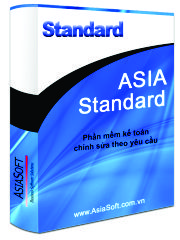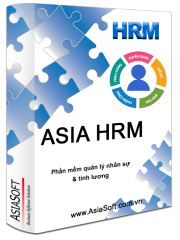 21 May, 2018
21 May, 2018
State Bank regulates consumer lending activities
The State Bank of Vietnam requires financial companies to fully issue regulations on the consumer lending interest rate bracket to apply uniformly throughout the system from time to time, including the highest lending interest rate, the highest interest rate, and the lowest interest rate. lowest lending rate for each loan product.
On May 15, 2018, the State Bank of Vietnam (SBV) issued Document No. 3436/NHNN-TTGSNH requesting credit institutions and foreign bank branches (referred to as credit institutions) to rectify operations for banks. consumer loans, loans for life at credit institutions.
The document clearly states that, in order to prevent fraud, violate the provisions of the law on consumer loans, loans for life, ensure the legitimate interests of customers, ensure safety. in lending and issuing activities using credit cards of credit institutions, following Document No. 1366/TTGSNH4 dated May 3, 2018 of the State Bank (Banking Inspection and Supervision Agency) on the increase strengthen the implementation of Directive No. 07/CT-NHNN on consumer lending activities, serving the daily life needs of credit institutions, in order to ensure the safe operation of the financial system and the interests of borrowers, Governor The SBV requires credit institutions to strictly perform the following tasks:
Firstly, reviewing internal regulations, ensuring that they are fully promulgated in accordance with the provisions of the law, especially internal regulations on loans for life, consumer loans, loan management, Issuing and providing credit card payment services in accordance with business characteristics of credit institutions in accordance with the provisions of Circular 39/2016/TT-NHNN dated December 30, 2016 on lending activities of credit institutions, foreign bank branches and Circular No. 43/2016/TT-NHNN dated December 30, 2016 regulating consumer loans of financial companies, Circular No. 19/2016/TT- SBV dated June 30, 2016 regulating banking card operations and Circular No. 26/2017/TT-NHNN amending and supplementing a number of articles of Circular No. 19/2016/TT-NHNN; Disseminate, thoroughly understand and deploy to all units and employees of the credit institution to uniformly implement and strictly comply with the provisions of law and internal regulations.
Second, strictly abide by legal documents on lending for life, consumer lending, and credit card issuance, especially the following provisions:
(1) Strictly comply with regulations on interest rates and fees related to lending activities as prescribed in Circular 39/2016/TT-NHNN; Strictly implementing regulations on principles, methods of calculating interest and fees, transparency of credit extension interest rates according to Circular No. 14/2017/TT-NHNN dated September 29, 2017 on methods of calculating interest in deposit receipt and credit extension activities between credit institutions and customers.
(2) Strictly implement regulations on transparency of lending activities such as: (i) Regulations on listing of model contracts, general trading conditions, provision of information on model contracts, and conditions General transactions for customers in accordance with the provisions of Circular 39/2016/TT-NHNN; (ii) Provide fully to customers before making a loan agreement with information about loan interest rates, principles and factors determining interest rates in case of applying adjustable interest rates, interest rates overdue, fees and charges in accordance with Circular 39/2016/TT-NHNN.
Particularly for consumer finance companies, it is required to fully promulgate regulations on the consumer lending interest rate bracket to apply uniformly throughout the system from time to time, including the highest lending interest rate. , the lowest lending interest rate for each consumer loan product and report to the SBV on the lending interest rate bracket as prescribed in Circular 43/2016/TT-NHNN.
(3) Strictly complying with regulations on adjudication and debt collection in accordance with Circular 43/2016/TT-NHNN and relevant laws.
(4) Review and strictly manage the service referral points, service introduction staff, partners of the credit institution to ensure compliance with the provisions of the law and internal regulations of the credit institution.
(5) Strictly control credit card issuance activities, ensuring compliance with the provisions of Circular No. 19/2016/TT-NHNN dated June 30, 2016 regulating banking card activities and Circular No. No. 26/2017/TT-NHNN amending and supplementing a number of articles of Circular No. 19/2016/TT-NHNN.
Third, strengthen supervision, inspection and control of compliance with regulations of the State Bank and the law on credit granting activities in general, lending for life, and consumer lending in particular. all branches and business units in the network of credit institutions; ensure that officers and employees strictly comply with internal processes, regulations and laws (including transparency of contract information, confidentiality of customer information, use of appropriate debt recovery measures). well suited…); Timely detecting and strictly handling cases of violations of laws and internal regulations in consumer lending activities, lending for life, and protecting the legitimate interests of customers.
Fourth, review the quality of staff, improve the quality of the recruitment process, evaluate staff, and limit the moral hazard that may occur; Regularly organize professional training, training to improve skills, awareness of law compliance and professional ethics for officials and employees of credit institutions.
Fifth, coordinate with functional agencies in capturing information, promptly notify and warn in the systemto take preventive measures, minimize risks and possible violations to customers. with CIs.
















